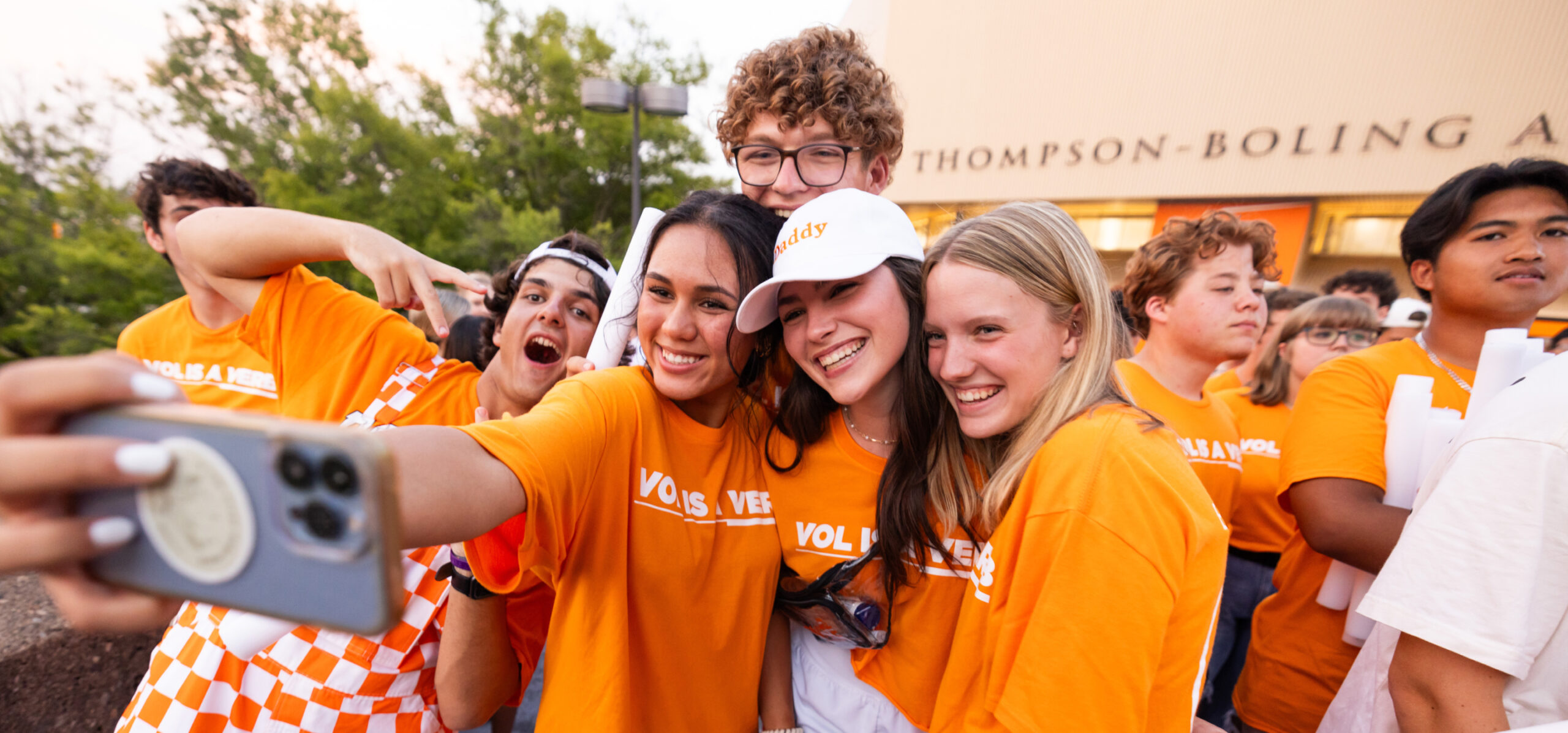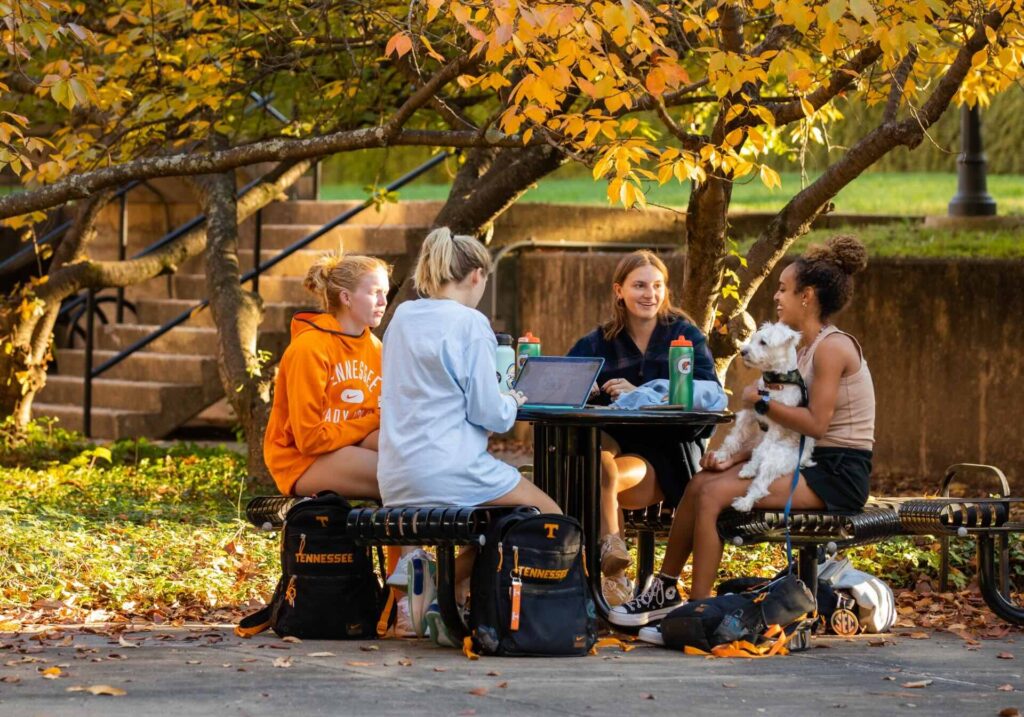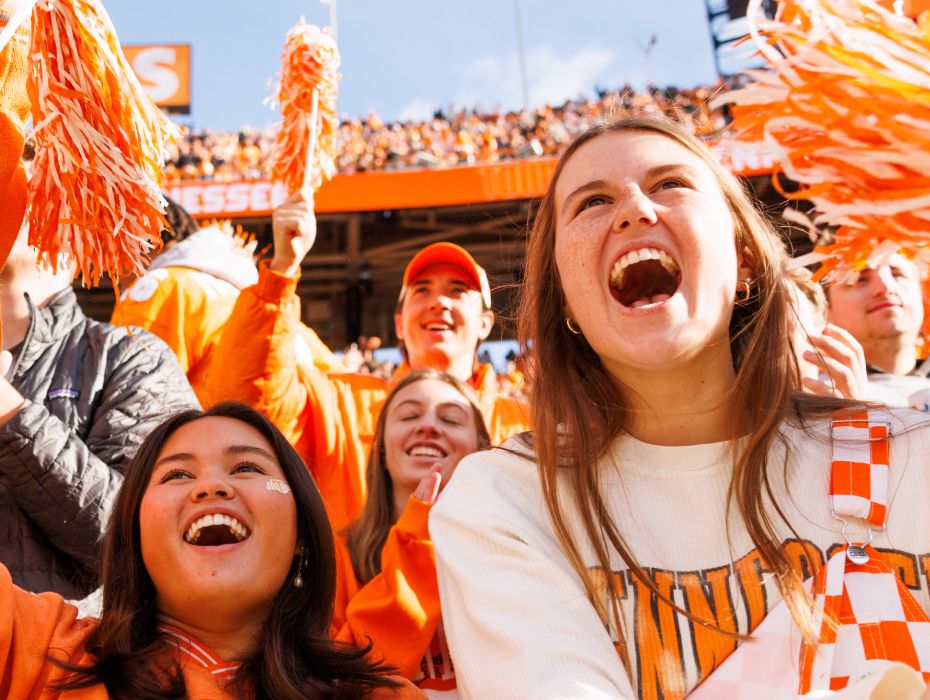
Apply to UT
Admissions & Aid
Apply to Tennessee’s top public university, where you’ll have countless opportunities to achieve your goals with the support of a community committed to your success.
Apply as an
undergraduate student
With over 360 undergraduate programs, you can study what you love at UT. The time you spend here—creating lifelong friendships, exploring new passions, and developing invaluable skills—will be the spark that ignites your future.
First-year
Is this your first time applying to attend university full time?
Admissions counselors won’t just look at your GPA, they also care about your extracurriculars and special talents—things that make you, you!
Transfer
Transferring to UT from another institution?
If you began your education elsewhere, applications to pursue a UT degree are available for fall, spring, and summer terms.
Online
Looking to study online?
Online programs at UT allow you the flexibility to earn your degree from any location.
International
Want to earn your degree by studying in the United States?
Students attend UT from more than 50 countries! You’ll have an application checklist to help you keep track of everything you need.
My experience at UT has been defined by the relationships I’ve built with my professors and the people in the clubs I’m in. There’s nothing like walking into the Humanities and Social Sciences building and being reminded I’m about to see some of my favorite people.
ABBY
(’24)
Journalism and Electronic Media / Religious Studies


The Volunteer experience
Just a mile away from downtown Knoxville, you’ll find a place where “Rocky Top” is sung loudly and students are united by deeply rooted traditions.

Affordable & accessible
Attending an affordable university is important! That’s why UT offers financial aid and scholarships for in-state, out-of-state, transfer, and international students.
18:1
student-to-faculty ratio
90%
of UT graduates are employed full-time or enrolled in graduate school within six months of graduation
550+
student organizations
Apply as a
graduate student
Forge a new career path or elevate your expertise with an advanced degree from UT.
Apply to one of UT’s 500+ graduate programs designed to expand your knowledge through mentorship and collaboration with world-renowned faculty.
Online
Earn a graduate degree from anywhere!
Busy schedule? Studying from afar? UT’s online programs are designed with you in mind!
International
Continue your education in the United States.
UT’s graduate programs are for everyone. No matter where you’re coming from, you’ll find a welcoming place to call home!
Interested in Law or Veterinary Medicine?
Conduct research in the Great Smoky Mountains, innovate alongside industry leaders from companies like Volkswagen, or travel abroad to excavate archaeological sites!

Find out more
Students love UT because they get an experience like no other. The Volunteer spirit on campus is contagious, finding community is easy, and the dedication of professors to student success is unmatched. You’ll love it here, too.
